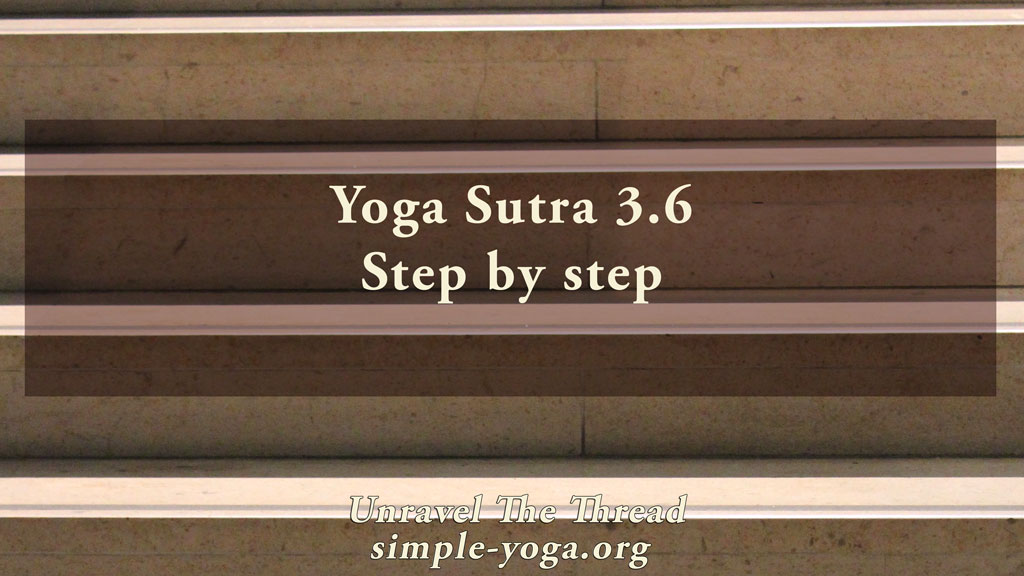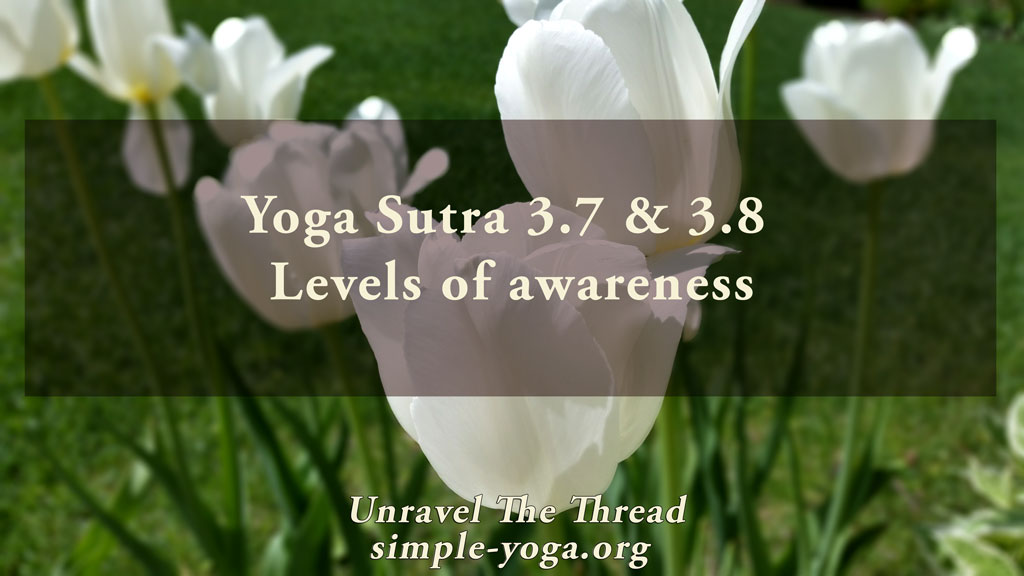
3.6 Step by step
July 1, 2021
3.9 Towards inner silence
July 15, 2021
3.6 Step by step
July 1, 2021
3.9 Towards inner silence
July 15, 20213.7 & 3.8 Levels of awareness

3.7 Dharana, Dhyana and Samadhi are more internal than the previous five limbs.
3.8 Yet, Dharana, Dhyana and Samadhi are still external to the subtlest state of pure awareness (nirbija samadhi).
Just as a skilled scribe expertly modulates the pressure and movement of a stylus to create shapes and forms with pleasing proportions and harmonious coherence, a yoga practitioner grows in sensitivity to attend to the inner world with ever-growing skill and subtlety. The natural process initiated by the first five limbs of yoga develops into the capacity to be effortlessly focused (dhyana), becoming a receptacle for equanimity and fullness (samadhi) that results in the capacity to abide in neutrality and self-control (samyama). These final three limbs of the eight-limbed path of yoga require great dedication and a consistent uninterrupted practice over a long period of time (abhyasa). They continue the process of removal of obstructions, limitations and inefficiencies initiated with the first five limbs. Although reaching the high levels of meditative integration presented in the previous sutras represents a significant achievement, these two aphorisms indicate that there are still lingering traces of separateness preventing the practitioner from fully embodying pure awareness. These traces are either past impressions or the remnants of subtle identification with externalities (1.18). Although more internal than the previous five limbs, these final three limbs are not the peak of the complete integration that has been mentioned before, the seedless integration known as nirbija samadhi. In seedless integration, all remaining labels of identity cease to define you and your life, thus facilitating the direct experience of utter connectedness with the awareness that pervades all aspects of life everywhere. This progression through the levels of samadhi was presented towards the end of Chapter One from sutra 1.40 onward.
It has been said by many teachers before that integration (samadhi) can be received only by grace and that there is no formula for it other than the full surrender of the illusion of control (2.45), because only by forgetting your individual identity can you embrace the perfection of life in all its myriad of unique, diverse, and ever-changing manifestations.
As you cultivate spaciousness, stillness, and silence within, can you soften your grip on anything and everything?
In other words, can you do consciously what you do every night unconsciously when you go to sleep?
Would it be possible to relinquish ownership of your beliefs?
Can you choose to let go of the filters coloring your perceptions so that your mind and intellect can be a clear and streak-free window into life?
As usual, one more way of exploring the meaning of this sutra is by chanting it.
You can choose to chant it in its traditional form with some of the words coming together.
For sutra 3.7
3.7 trayamantaraṅgaṃ pūrvebhyaḥ
त्रयमन्तरन्गं पूर्वेभ्यः ॥७॥
Another option is to chant each word in the sutra individually:
- trayam
- antaraṅgaṃ
- pūrvebhyaḥ
For sutra 3.8
3.8 tadapi bahiraṅgaṃ nirbījasya
तदपि बहिरङ्गं निर्बीजस्य ॥८॥
Another option is to chant each word in the sutra individually:
- tat
- api
- bahiraṅgaṃ
- nirbījasya
If you prefer, you may listen to the podcast:
Unravel the thread is now available as a book!
If you find Simple-Yoga.org and Unravel the thread useful, consider supporting my labor with a donation, you may also donate using PayPal or Venmo. Thank you!
